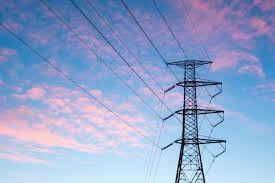The global HVDC transmission system market is poised for transformative growth over the next decade. As countries intensify their focus on clean energy, decarbonization, and modernized power infrastructure, HVDC systems are emerging as a critical enabler of this transition. Characterized by their ability to transmit power over long distances with lower losses and higher efficiency, HVDC technologies are becoming increasingly important for both developed and developing energy economies. This article outlines the key factors shaping the future outlook of the HVDC transmission system market and the trends likely to define its trajectory through 2035.

The Role of HVDC in Future Energy Systems
HVDC technology plays a vital role in addressing the limitations of traditional Alternating Current (AC) systems, especially when it comes to integrating renewables, improving cross-border energy exchange, and delivering power across vast geographies. With the global demand for electricity continuing to grow—especially in urbanizing regions—HVDC solutions offer a future-proof answer to long-distance, high-volume power transmission.
As nations increasingly invest in solar, wind, hydro, and other renewable resources, the need for robust and efficient transmission mechanisms becomes more urgent. HVDC technology, with its ability to interconnect different grids and reduce power loss over extended distances, is central to enabling this shift.
Key Trends Influencing Future Growth
-
Renewable Energy Integration
The transition to cleaner energy sources is the strongest driver of HVDC market growth. Large-scale solar parks in deserts, offshore wind farms, and hydropower stations in remote regions require transmission lines capable of efficiently delivering power to consumption centers. HVDC systems offer the most suitable infrastructure to connect these renewable projects to national and regional grids, especially when conventional AC transmission proves inefficient.
-
Global Interconnectivity and Super Grids
The future of energy is increasingly borderless. Countries are collaborating to create cross-border transmission corridors, also referred to as “super grids,” that allow energy sharing and load balancing at the continental scale. HVDC technology is expected to be the foundation of these systems. For instance, intercontinental connections between Europe and Africa or between different regions of Asia are being considered to optimize renewable energy use across time zones and seasons.
-
Urbanization and Grid Modernization
The rise in megacities and smart cities is creating enormous demand for stable, uninterrupted electricity. HVDC systems are being integrated into urban energy frameworks to enhance efficiency, reduce the strain on aging AC systems, and facilitate future-proof power architecture. Additionally, many countries are overhauling their energy infrastructure to replace aging grid systems, and HVDC solutions are becoming the preferred choice for high-capacity, future-ready grids.
-
Technology Innovation
Ongoing advancements in converter stations, cable materials, and digital control systems are lowering the cost and complexity of HVDC implementation. Voltage Source Converter (VSC) technology, for example, allows easier integration with AC grids and is suited for complex topographies like urban areas or offshore platforms. Multi-terminal HVDC systems, a recent innovation, allow for more flexible power routing and regional grid integration.
-
Government Initiatives and Policy Support
National policies supporting decarbonization and grid expansion are instrumental in accelerating HVDC deployment. Governments are offering incentives, launching pilot projects, and establishing HVDC-specific regulatory frameworks to attract private investment. These proactive measures, combined with commitments to meet net-zero targets, are paving the way for sustained HVDC market expansion.
Regional Outlook
-
Asia-Pacific: Expected to remain the largest market for HVDC systems, driven by rapid industrialization, population growth, and ambitious renewable energy targets in countries like China, India, and Southeast Asian nations.
-
Europe: Strong focus on offshore wind development and cross-border electricity exchange through integrated power markets positions Europe as a key hub for HVDC growth.
-
North America: Investment in upgrading transmission infrastructure and integrating renewables like wind and solar in the U.S. and Canada is forecasted to boost HVDC demand.
-
Middle East & Africa: As new renewable projects are initiated and cross-border power initiatives gain traction, HVDC infrastructure will become increasingly critical.
Market Forecast and Investment Outlook
Analysts anticipate robust double-digit growth in the HVDC transmission system market over the next decade. Major players are expanding production capacities, launching new technologies, and forming strategic alliances to gain a competitive edge. The capital-intensive nature of HVDC projects is balanced by long-term operational savings and strong policy backing, making them attractive investments for both public and private sector stakeholders.
The market is also expected to witness increased participation from technology firms, infrastructure developers, and energy storage companies, all seeking to integrate their offerings within HVDC-enabled smart grids.
Challenges to Watch
Despite the optimistic outlook, the HVDC market faces a few hurdles. These include high upfront investment costs, long permitting and approval processes, and a lack of standardized global regulations. Moreover, the shortage of skilled professionals to manage complex HVDC systems could limit growth in some regions.
However, as global experience with HVDC projects grows and technologies become more standardized and modular, these challenges are likely to diminish.
Conclusion
The future of the HVDC transmission system market is closely aligned with the global shift toward sustainable, resilient, and interconnected energy networks. With rising demand for efficient power transmission, supportive policies, and growing investments in renewable energy, HVDC systems are positioned to play a foundational role in the energy landscape of tomorrow. As innovation accelerates and the benefits of HVDC become more universally recognized, the market will likely become one of the most dynamic segments within the broader energy infrastructure industry.




Comments
0 comment